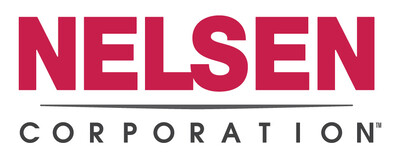2023 Online Catalog - Flipbook - Page 491

National Primary Drinking Water Regulations 17
Recognized Treatment Techniques for meeting the National Primary Drinking Water Regulations
with the Application of Point-Of-Use-Systems:
National Primary Drinking Water Regulations (NPDWRs or
primary standards) are legally enforceable standards that
apply to public drinking water systems. Primary standards
protect drinking water quality by limiting the levels of
specific contaminants that can adversely affect public
health and are known or anticipated to occur in drinking
water. The following tables divide these contaminants into
Microorganisms, Radio Nuclides, Inorganic Chemicals,
Organic Chemical and Disinfectant/ Disinfectant By-products.
For simplicity, WQA uses the term Point-Of-Use (POU)
when referring to both treatment at the tap and for whole
house treatment.
Except for instances of contamination through inhalation or
dermal adsorption, the WQA notes that in-home treatment
of drinking and cooking water only is often the most
economical and preferred method of choice for consumer
protection from these drinking water health contaminants.
Of course, the particular contaminant found in the water will
determine the appropriate treatment technique.
It is the general consensus of the manufacturers and
sellers of the point-of-use systems employing the listed
technologies that, if these systems are defect-free, properly
applied and installed and maintained strictly according to the
manufacturers’ installation and maintenance instructions,
they may be considered for use in meeting the requirements
of the National Primary Drinking Water Regulations
(NPDWR).
Note:
This document addresses the United States Environmental Protection Agency National Primary Drinking
Water Regulations in effect at its time of publication.
These regulations are continually being reviewed
and updated at the federal level. Accordingly, this
list of recognized treatment technologies will be
reviewed and amended periodically.
Copyright© 2010 By Water Quality Association
Technical & Engineering
The recognized treatment methods listed here reflect the
fact that point-of-use systems on the market today may
differ widely in their effectiveness to treat any specific
contaminant. Also, many of the these can appear in a variety
of forms (ionic and/or organic). Examples include arsenic,
lead, chromium and mercury which may require different or
multiple treatment techniques. Anyone contemplating use
of such point-of-use equipment for a specific application
or purpose should make their selection only after careful
investigation and substantiation of the performance
capabilities. As part of the installation procedure, the
performance of the system should be verified through an
appropriate water analysis. In addition, the product water
should be monitored and appropriately serviced to ensure
continued satisfactory performance.
7
Call Nelsen Toll-Free — OHIO - 800.362.9686, ARIZONA - 866.445.4299, TEXAS - 855.674.0357 or FLORIDA - 866.712.6796
All prices and products subject to change without notice. ©Nelsen Corporation